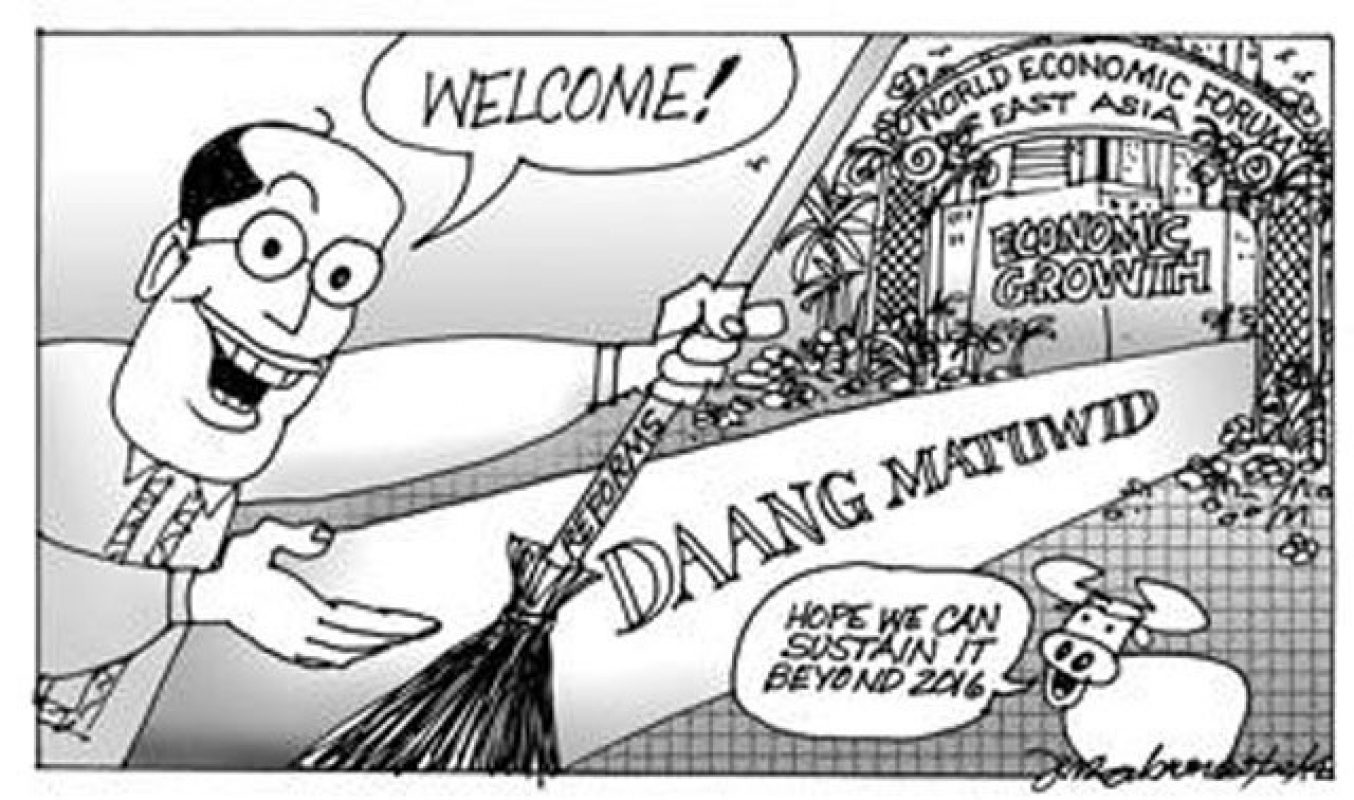Background of Public Sector Reform
- Posted on

Policies on public sector reform are every administration’s standard initiative aimed to streamline the bureaucracy. The reform measures may vary depending on the priority of the current leadership, which maybe in the form of reengineering, reorganization, and rationalization anchored on the principles of economy, efficiency and effectiveness, transparency, social growth, innovation, and good governance.
Public sector reform is a mechanism that introduces innovations in terms of modernization, transformation, and professionalism for the improvement of institutions and processes. These innovations as areas of reform are the common theme of every government’s agenda. As pointed out by the Hong Kong government, “public sector reform is a program of financial and management reforms aimed at bringing about long-term productivity improvements in the public sector and better service to the community” (Scott 1994:5).
In the Philippine context, several public sector reform initiatives have been implemented over the last two decades covering both national and local levels. This means that the entire bureaucracy is at the point of introducing and reintroducing reform initiatives toward a better government.
Seen through the lens of the reorganization framework, there is an interesting pattern in the country’s reform measures introduced by different administration since 1946. Under the leadership of Presidents Quirino (1950s), Marcos (1970s), and Aquino (1980s), dramatic and visible reorganizations were implemented. In the 1990s, the Ramos administration introduced reengineering while Estrada (1998), Arroyo (2010) and Aquino (present) implemented the rationalization of the bureaucracy. Table 1 shows the pattern of restructuring the bureaucracy into “four “periods – (1) Pre-Government Survey Reorganizational Commission (Pre-GSRC), (2) Government Survey Reorganizational Commission (GSRC), (3) Presidential Commission on Reorganization (PCR), and (4) Presidential Commission on Government Reorganization (PCGR)” (Gonzales and Deapara 1987:258). From 1992 to 2010, the reform policies that were introduced were along the lines of New Public Management (NPM) and good governance as a reaction to the 1997 Asian Financial Crisis.
Table 1. Comparison of the Different Public Sector Reform Initiatives, 1898-2013
| Types of Government Reorganization | Period | President | Reorganizational Law | Philosophy |
| Pre-Government Survey Reorganizational Commission (Pre-GSRC)* | 1898-1953 1941 1947 1950 | President Manuel Quezon President Manuel Roxas President Elpidio Quirino | Government Survey Board Reorganization Committee Reorganization Commission | Less Spoils, Filipinization Economy & Efficiency |
| Government Survey Reorganizational Commission (GSRC) | 1954-1956 | President Ramon Magsaysay | Republic Act No. 997 | Economy &Efficiency |
| Presidential Commission on Reorganization (PCR)** | 1969-1986 1970 1972 | President Ferdinand Marcos | Executive Order No. 281 Presidential Decree No. 71 Integrated Reorganization Plan (IRP) | Economy & Efficiency, Economic Social Development |
| Presidential Commission on Government Reorganization (PCGR) | 1986-1992 | President Corazon Aquino | Executive Order No. 5 | DeMarcosification Decentralization Economic Rationality & Social Justice |
| Streamlining of the Office of the President | 1992-1998 | President Fidel V. Ramos | Executive Order 149 | Economic Growth, Social Equity and National Solidarity and Unity |
| Re-Engineering the Bureaucracy for Better Governance Program | 1998-2001 | President Joseph Estrada | Executive Order No. 165 | Efficiency, Innovation, Effective Governance & Sustainable Socio-Economic Growth |
| Rationalization Plan | 2001-2010 | President Gloria Macapagal Arroyo | Executive Order No. 6 | Efficiency &Effectiveness |
| Rationalizing the Office of the President | 2010-present | President Benigno Aquino III | Executive Order No. 18 | Economy, Efficiency Effectiveness and Transparency |

Public sector reform traces its roots in the Second World War but the drive for public sector reform was “initiated during the 1980s in the advanced capitalist democracies as a response to the public sector expansion process as a dominant feature of OECD countries” (Lane 1986:2). Various studies claim that the focus of public sector is on the economic side such as deregulation, privatization and marketization.
According to Lane, the Reinventing Government of Osborne and Gaebler (1993) talks about a government that is catalytic, entrepreneurial and results-oriented toward maximized productivity, efficiency and effectiveness. This means that using performance measurement and indicators to assess individual and institutional performance based on the budget allocation is imperative. Osborne and Gaebler’s framework offers deregulation, privatization and marketization, highlighting efficiency as the nucleus of reform. “The efficiency search meant that public sector growth had to be halted, that programs often needed to find new service delivery mechanisms” (Lane 1997:6).
In the 1990s, it was pointed out that aside from economic reform, there was also a call for “more state action or other new forms of public sector intervention namely the search for better public accountability and the promotion of individual or group justice in the form of fairness” (Lane 1997:6). The most conspicuous expression of accountability as articulated by Lane (1997) is the increased attention on human rights, due process and transparency of rules. It is said that any dysfunctionalities in the public sector would be tantamount to corruption, inefficiency and unprofessionalism. Thus, introducing public sector reform initiatives means promoting accountability in all strata of development.
Accountability as one of the hallmarks of good governance means making public officials and institutions accountable to the people they serve. By being accountable means public officials and government institutions are effectively performing their duties and responsive to the needs of the community. Many studies relate the concept of accountability to the concept of corruption asserting that when there is accountability, the incidence of corruption is lessened.
Under Philippine laws, accountability is demanded from government institutions to make public servants accountable to the position entrusted to them by the sovereignty. The definition of accountability is anchored in the 1987 Philippine Constitution, the Administrative Code of 1987 and in all other laws that have been enacted. The provision on accountability is almost present in all laws especially in Republic Act No. 6713 on the Conduct of Conduct and Ethical Standards for Public Officials and Employees. Traditional concepts on accountability refer to the “institution of a system of checks and balances in an organization through which an administrator accounts for his stewardship of resources” (Alfiler 1995:401 citing Chandler and Plano 1982:107).
There are varied definitions of accountability but the simplest form of accountability means a requirement for an administrative organization to render an account of what it has done (Peters 2007:16). It may also connote responsibility on the part of public officials to respond properly to the provisions of the law. As pointed out by Peters, accountability is a platform of “understanding how programs may fail and finding mechanisms that make programs perform better”. Accountability is a “fundamental value for any political system” (Peters 2007:15).
Transparency is imperative in producing accountability in the public sector. Peters (2007) emphasized that accountability and transparency are essential to a democratic form of government. He further pointed out that “opening up government to scrutiny from outside independent actors provides a means for identifying and then questioning the government’s actions” (Peters 2007:16). Public sector governance underpins accountability and transparency as major drivers for development. Public sector reform, like globalization is seamless and inevitable.

Succinctly, public sector reform is crucial to the over-all development of the country as the impetus for change nowadays emanates from citizens who as taxpayers demand for better service delivery. This is not only true in the Philippines but also in other governments around the world. Public scrutiny is in greater heights particularly on the kind of services the government provides as citizens expect efficiency, accountability, transparency, productivity, responsiveness, professionalism and value-for-money services from the government. Thus, the growing demand for a government that is accountable to the people is overwhelming.
The recently concluded 2014 PSPA International Conference with the theme “Public Administration Governance Reforms and Innovations” warrants that the conference served as a medium for informed discussion on various public administration development issues and offered proposals and innovative solutions on public sector reform. More than a hundred of scholarly articles were presented in an open forum that ushered a rich discourse and deepened analysis of public sector reform policies not only at the national and local levels but at the regional level as well.
Lizan E. Perante-Calina is a Doctoral Candidate for Public Administration at the University of the Philippines, National College of Public Administration and Governance (UP-NCPAG). She is also the Executive Director of the Secretariat Committee of the Philippine Society for Public Administration.
References
Alfiler, Ma. Corazon, P., The Political-Administrative Accountability Continuum in Philippine Public Service, Conquering Politico-Administrative Frontiers, Essays in Honor of Raul P. de Guzman, ed., Ledivina V. Carino, U.P. College of Public Administration and the University of the Philippine Press. p 401, 1995
Brillantes, Alex B. Jr., and Perante-Calina-Lizan, Making Reform Happen: The Philippine Experience: Reorganization and Decentralization, Worskhop Proceedings on Making Reform Happen in Southeast Asia and Korea, International Collaborative Workshop conducted by the Center for International Development, Korea Development Institute, Korea & Korea Research Institute, University of New South Wales, Australia held at Siem Reap, Cambodia, September 4-7, 2013
Gonzales and Deapara, 1987
Lane, Jane Erik, Public Sector Reform, Rationale, Trends and Problems, ed Jane Erik Lane, Sage Publication, London, pp 2-6, 1997
Peters, Guy, B., Performance-Based Accountability, Performance Accountability and Combating Corruption, Public Sector Governance and Accountability Series, ed Anwar Shah, World Bank, Washington, D.C. p 15-16, 2007
Scott, Ian, Public Sector Reform: A Critical Overview, Trends and Development, Asian Journal for Public Administration, Hong Kong. p 5, 1994
Laws
1987 Philippine Constitution
1987 Administrative Code of the Philippines
Image sources
Anive, Anton. http://www.slideshare.net/antonovanive/the-nature-of-bureaucracy-in-the-philippines (Accessed on March 4, 2015)
http://www.newsflash.org/2004/02/00001/000088921.jpg (Accessed on March 4, 2015)
http://rinf.com/alt-news/breaking-news/selling-empire-american-propaganda-and-war-in-the-philippines-2/ (Accessed on March 4, 2015)
http://newsinfo.inquirer.net/478349/time-for-name-change-diosdedo-macapatay-tao-hospital (Accessed on March 4, 2015)
Additional Resources
Abueva, J.V. (2006). The Ramos presidency and administration : contemporary views and assessments, 1992-1998. Quezon City: University of the Philippines Press. (Link)
Brillantes, A.B. (ed.). (2003). Good urban governance in the Philippines : status and best practices. Quezon City: NCPAG. (Link)
Brillantes, A.B., Jr. (2014). Accountable, responsive and inclusive governance. Philippine Governance Digest, 1 (1), 6-7.
Brillantes, A.B., Jr. (2014). Accountable, responsive and inclusive governance: Part 2. Philippine Governance Digest, 1 (2), 6-7.
San Juan, M.J.S. (2014). Administrative values in the Philippines and their implications to the efficiency of the bureaucracy and governance. Philippine Governance Digest, 1 (2), 12-14.
Brillantes, A.B. Jr. and Fernandez, M.T. (2010). Toward a reform framework for good governance: Focus on anti-corruption. Philippine Journal of Public Administration, 54 (1-2), 209-245
Co, E.E.A. (2010). The long and winding road to infrastructure development and reform. Philippine Journal of Public Administration, 54 (1-2), 246-273.
Cabo, W.L. (2007). Exploring accountability initiatives in Philippine local governance. Philippine Journal of Public Administration, 51 (1-4), 33-50.
Villamejor-Mendoza, M.F. (2007). Enhancing corporate governance and reforms in the public sector. Philippine Journal of Public Administration, 51 (1-4), 153-204.
Ferrer, O.P. (2005). Community organizing and governance. Philippine Journal of Public Administration, 49 (1-2), 109-149.
Cariño, L.V. et. al. (2005). Reinventing Philippine governance for globalization. Philippine Journal of Public Administration, 49 (1-2), 150-204.
Ilago, S.A. (2004). Reform as policy theory: The case of public management reform in the Philippines. Philippine Journal of Public Administration, 48 (3), 249-259.
Dubsky, R. and Pathak, R.D. (2001). The formula for public sector reforms: Public enterprise reform in Fiji Islands and good governance in Oceania. Philippine Journal of Public Administration, 45 (3), 149-165.
Cariño, L.V. and Guiza, E.C. (2001). Devolution for democracy: Good practice cases from the Philippines. Philippine Journal of Public Administration, 45 (3), 242-271.
Reyes, D.R. (1987). Social services policy in the transition state: The agenda of social reform in the Philippines. Philippine Journal of Public Administration, 31 (1), 1-23.
